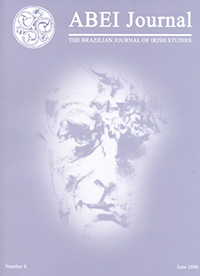Concrete, Virtual and Imaginary Space: Beckett’s Stage Directions
DOI:
https://doi.org/10.37389/abei.v8i0.3714Keywords:
Samuel Beckett, Stage directions, Drama analysis.Abstract
Samuel Beckett has made a peculiar use of stage directions in his
theatre. Since the first plays, as Waiting for Godot, they became essential tools in order to establish a precise and restricted way of staging and guaranteeing the stage physicality he must have had in mind. After the sixties Beckett started to stage his own plays and his writing became yet more centered in rigorous stage directions. This article aims to describe, through the use he makes of stage directions, his evolution from being just a dramatist, in the fifties, till becoming a complete artist of the theatre in the eighties. In doing that intends to prove the utility of looking for stage directions in drama analysis, and to show how, from this point of view, Beckett’s theatre gets close of the work of artists commonly viewed as radically anti-theatrical, as is the case of Robert Wilson.


